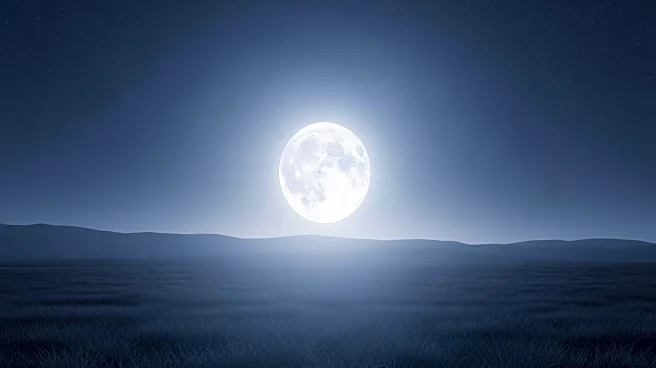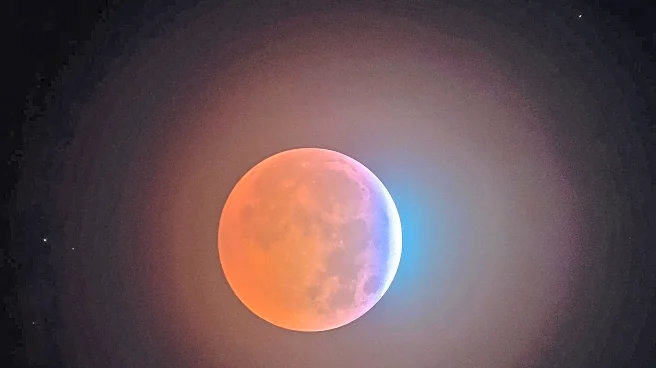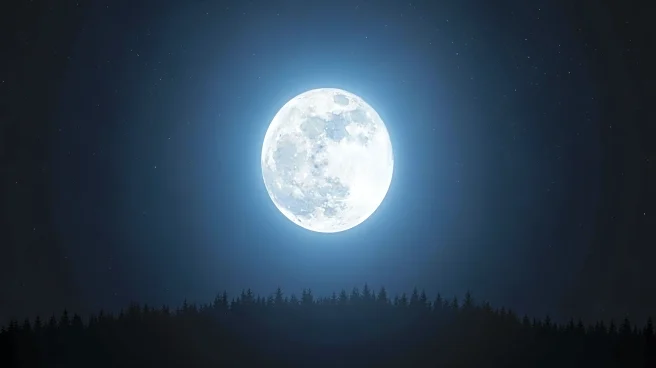What's Happening?
On November 5, 2025, Californians witnessed the Beaver Moon, the second of three consecutive supermoons this year. A supermoon occurs when the full moon is at or near its closest point to Earth, known
as the perigee, making it appear larger and brighter. The Beaver Moon reached its peak illumination at 5:19 a.m. PST, but it remained visible for a couple of days. This full moon is named the Beaver Moon as it coincides with the time when beavers prepare for winter and historically, when beavers were trapped for their pelts in North America.
Why It's Important?
The occurrence of a supermoon is a significant event for astronomers and the general public alike, offering a spectacular view of the night sky. Such celestial events can increase public interest in astronomy and science, potentially inspiring educational activities and community events. For those in the tourism and hospitality industries, supermoons can attract visitors to areas with clear views, boosting local economies. Additionally, the cultural significance of the Beaver Moon highlights historical practices and the relationship between natural events and human activities.
What's Next?
The next supermoon is expected in December 2025, providing another opportunity for stargazers to witness this celestial phenomenon. As supermoons occur three to four times a year, they continue to be a point of interest for both amateur and professional astronomers. Communities may plan events around these occurrences, promoting educational outreach and public engagement with astronomy.











